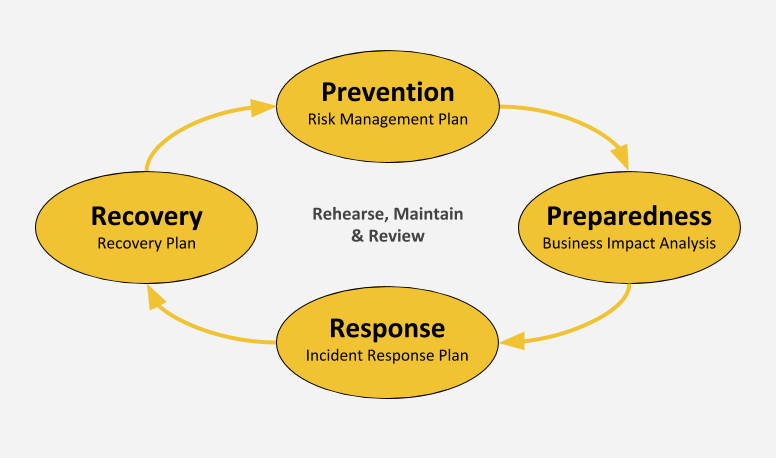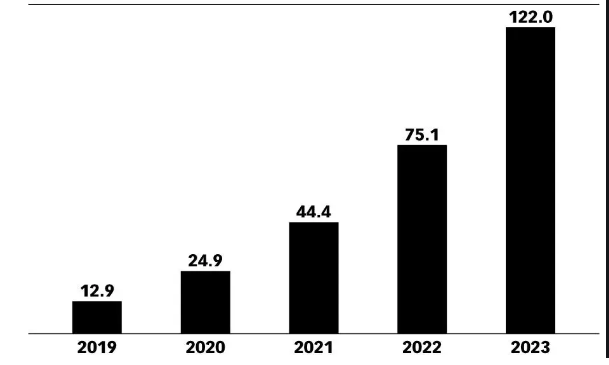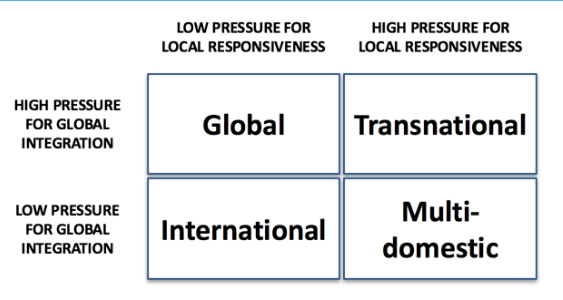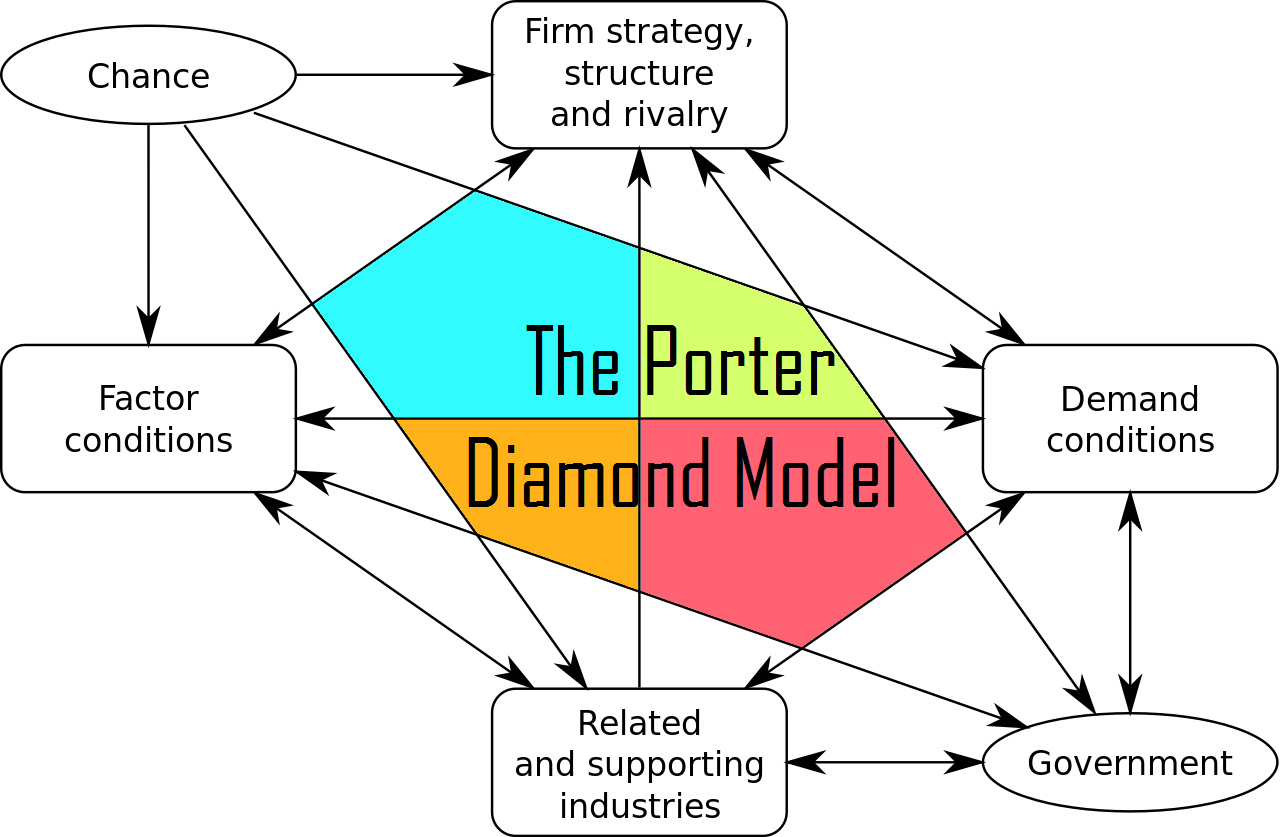7BSP1350 Project Risk & Commercial Management
Section 6 = A quantitative analysis of the risks
Several types of risks are faced by retail pharmacists while introducing new business plans in the existing target market. Different types of risk include;
- Supply chain risk
Business risk can be grouped into parts that are outside store network and interior production network. Wilmont confronted different outer stockpile chains hazards including request hazard, supply hazard, climate hazard and business hazard, then again inward inventory networks incorporate assembling dangers, control and arranging dangers and possibility chances also (El-Ibiaryet al. 2017). In order to keep away from business network, hazards PPRR Risk management model can be utilized. It is considered a famous procedure to stay away from production network hazards.

Figure 1: PPRR Risk management model
As per the present case study, it showed Wilmont company might face problems related to supply chain management and other business management risks as well. Therefore, this PPRR risk management model helps to understand what risk factors this organization faced by introducing its drone technology in the target business market (Craig et al. 2021). PPRR risk management model showed:
Prevention: In request to gauge inventory network hazard, organizations need to grasp prudent steps, for example, Wilmont’s needs to broaden their provider base.
Preparedness: Companies need to foster an alternate course of action to battle a crisis circumstance. Wilmont’s needs to set up a backup arrangement, for example, elective providers, and financial backing and protection strategies that assist with battling against serious misfortune.
Response: Execute and react to the alternate course of action that has been taken to decrease problematic occasions.
Recovery: Work on fixing all resumes activity to run things ordinary at the earliest opportunity.
- Manage equipment risk
Equipment risks for example power cuts, mechanical breakdown, and activity blunder also everything that can diminish an organization’s benefit. To fix this multitude of issues Wilmont’s organization needs to make protection from hardware breakdown which assists with recuperating harm power floods, cost of mechanical breakdown and working mistakes as well (Guadamuzet al. 2020). In addition, business Interruption protection assists with recuperating pay misfortune by gear disappointment.
Drone technology and other current innovation, for example, IoT and distributed computing have their own benefits that could lead the organization towards progress. The two of them all together affect business execution, which should be visible from the chosen articles. Industry transformation 4 is about digitization and interfacing each conceivable machine in an organization by empowering the IoT and Artificial Intelligence (Mayakul and Ayuthaya, 2018). Drone innovation has a ton of degrees in future, which is one more purpose for greater fame in the business areas.

Figure 2: Rising use of drone technology in the UK
On the other hand, Wilmont needs to have a partnership with different pharmaceutical companies or hospitals to execute their drone delivery technology successfully. As stated by Guadamuz et al. (2020), in the UK’s business market this technology or innovation was not a new business plan, this type of technology has already been proposed by DroneTech in Cambridge. Wilmont organization spends a tremendous sum in evaluating systems so that organization could introduce itself uniquely in contrast to different contenders. Henceforth, the strategy of the organization showed this organization has confronted hazards from various rivals in the cutthroat business market.
Section 7 = A failure mode and effect analysis of the risk
Drone technology is an effective and innovative technology that helps to enhance business plans in the modern business market. As per the views of Dillon et al. (2018), analysing the risks is effective for international businesses to ensure a high-performance level of their supply chain management. Hence, it can be said that lack of risk or problem analysis within an organisational management system reduces the performance level of the organisational supply chain management.
It can be said that the information regarding the pharmacy products and services available is helpful for the company’s marketing growth with the support of a strong consumer base. Since, it inspires the market customers to be attached to this retail pharmacy chain (Samimi, 2020). Understanding the importance of product role in the marketing growth, this supermarket company has provided high concern to its production quality for better outcomes with the support of highly competitive advantages. This concern indicates the high effectiveness of the company’s supply chain management to satisfy its consumers according to their needs and demands.
The development strategies of the modernist SMEs are deeply influenced by the company’s products and services to achieve consumers’ required support. Hence, it can be said that the UK pharmaceutical chain is focused on developing its strategic concept by considering its products and services for better entrepreneurship. Moreover, this company has a great production quality while famous brands have participated with its retailing platform.
The impact of several political events and trade negotiations policies visualises certain issues in the global trade economy. According to Bartlett & Ghoshal’s Theory, Trade regimes and multilateral finance schemes create challenges in the international monetary funds. Modification in the monetary policies and increase in the foreign competition implements several challenges to the UK small and medium commercial markets (Kara et al. 2020). Cultural globalization increases the level of competition in the UK market as it is going tough for UK business to maintain their sustainable operational performances for a longer period. An increase in the total number of firms in the global market eliminates the chances of making an expansion of its business in the upcoming years.

Figure 3: Bartlett & Ghoshal’s Theory
Operational activities of the business need to consider foreign exchange risks within the business as forward exchange rates should need to be used to maximize operationally activities. Application of the forward exchange contract technique helped in making forward exchange contracts as fixed exchange development options within the business. As believed by Qazi and Akhtar (2020), an increase in the financial activities and selection of the currency options strategies is one of the vital aspects of the business. Moreover, it can help in maintaining stable development within the business. Improvisation of the business activities and making sustainable development can help in making the operational activities of the business effective and progressive.
Therefore, it could be said that this organisation mainly face risks from its competitive market as DroneTech company already has adopted this drone technology earlier to deliver medical products. In addition, it is also important for the organisation to manage its advanced technologies to introduce drone technology successfully in the market.
Section 8 = A risk response plan
In order to respond to the risk faced by Wilmont’s company, a particular risk response plan is needed (Case study). Modification in the pricing strategies of an organization can be effective in maintaining sustainability in the pricing policies of the organization. Hence, maintaining a balance of payment system can help in improving the forward exchange rates of the business. The UK pharmaceutical chain is quietly focused on Promotional Prices to increase its consumer’s involvement within its marketing stores and outlets (Kırılmaz and Erol, 2017). Since there are some quality offers in the company’s products with the support of high-cost effectiveness.
A risk register plan is also important for most companies to find out the risk that they faced from the target business market. In addition, being a pharmaceutical company, this company needs to follow a particular risk response plan, that includes;
| Risk factors | Description | Impact | Responsibility | Proposed strategy |
| Internal risk | ||||
| Financial risk | Financial risks are the principal hazard or difficulties looked at by any organization that could diminish organization notoriety in the objective business market. As expressed by Simbaet al. (2017), financial advancement assists the organization with further developing its usefulness to drawing in additional clients from the objective business market. On account of Wilmont organization, it confronted monetary danger because of less yearly income and fewer speculations by the financial backers also. In any case, the organization needs to relieve its monetary issues that the organization is looking from its interior dangers. | High | Finance manager | The financial manager of the organisation needs to focus on an improved financial plan or resources. |
| Technology error | These days innovation is the main variable that assists with lessening worker activity, while further developing usefulness of the organization also. As expressed by HAN and Kang (2020), innovation assists with diminishing information penetrating and eliminates the terrible computerized impression of the organization. On accountof Wilmont, the organization confronted hazard for not embracing new present-day innovation for organization advancement. | High | IT experts | IT experts need to adopt modern technologies so that it could manage its Drone delivery system successfully in the UK’s pharmaceutical market. |
| External risk | ||||
| Meeting customer demand | Customers are the main stakeholder of every organization. Poor maintenance of customer demand could result in poor sustainability and risk as well. As stated by Spichaket al. (2020), meeting customer demands is the main important factor for every organization to develop its customer base. Therefore, Wilmont needs to meet its customer demand by executing drone technology successfully. | Medium | Company manager | Company management needs to have a huge range of products and services to attract more customers. |
| Competitor | Competitive risk is a common risk factor faced by most of the small and large manufacturing organizations in the target business market. Moreover, most organisation needs to manage their products and services in the target business market to achieve competitive advantages. | High | HR manager | HR managers or company managers need to develop their service and product quality to attract more customers. |
Table 1: Risk response plan
(Source: Created by learner)
Section 9 = A risk monitoring and control plan
Global business brings high integration with low responsiveness in place of globalisation that is different from the multi-domestic. It supports traditional production with the presence of high quality and creativity to build a noticeable position in the global marketplace. Transactional is one of the effective directions of this theory while it suggests that organisations ensure high responsiveness and integration (Pisla et al. 2020). This helps global organisations to bring innovative and unique changes within the workplace to attract global customers.
Moreover, the international is the other effective factor that indicates the global businesses to make low integration with low responsiveness for ensuring the high marketing growth in the globally competitive marketplace. In this case, it is important to say that the theory is helpful for globalisation businesses while it provides the ultimate guidelines to ensure a high and noticeable marketing position in the global marketplace (Niemann et al. 2019). It is beneficial for the globalisation of business operations with the support of high customer’s interest. Moreover, this kind of involvement is capable of expanding the business internationally with the support of proper guidelines to ensure the marketing and economic growth of the global businesses.
On the other hand, Porter’s Diamond Model ensures the competitive advantage in the organisational expansion into a globally competitive marketplace. This theory is also known as “National Competitive Advantage Theory” as it is focused on increasing the competitive advantages of globalisation businesses. As per the views of Topolski (2021), the adoption of “Porter’s Diamond Model” has a great influence on modernist business organisations to expand their business.

Figure 4: Porter’s Diamond Model
Additionally, this theory suggests that there is a high influence of innovative changes by considering the existing financial and marketing condition of the global businesses organisations. In addition, according to Mayakul and Ayuthaya (2018), it also inspires global business managers to understand the actual demands of the global market to satisfy them according to their requirements. Therefore, it can be said that global business organisations can develop their firm’s strategic concept as well as structure to ensure the ultimate innovation within the entire management system (Abuzouret al. 2021). The investors of the business have been asked to invest a certain and necessary amount of money in order to invest in the previously planned budget of the organisational business initiation.
The organisational professionals will evaluate whether the implemented advanced technology has been able to appear as a beneficial one or not. In addition, professionals will start investing in the implementation of required technological devices and in improving the security services along with the required digitisation of the organisational business as well.
Section 10= A quality control plan to reduce primary and secondary risks
| Strategies to control risk | Quality control | ||
| 1st month | 2nd month | 3rd month | |
| Financial plan | In the first month, the investors of the business have been asked to invest a certain and necessary amount of money in order to invest in the previously planned budget of the organisational business initiation (Lee and Shin, 2018). In the entire first month, it has been observed whether the organisation can be able to achieve the intended profitability or not. In any case, if that has been encountered that despite extra investment done in the business, this organisation has not been capable enough to derive profit money, the organisation will take a further decision of taking any other initiation of changing or having a new plan for gaining the profitability. | In the second month, if the organisational professionals who are responsible for taking essential managerial decisions encounter a chance, then they try to get a hold of that opportunity. For example, if the organisational business has been able to achieve the intended profitability, then the professionals will focus on further advancement that needs to be done within the organisation (Lee and Shin, 2018). On the other hand, if the intended profitability has been achieved by the organisational business, the organisational authority will be focused on investing on other grounds of technological and other aspects of the business. | In the third month, the organisational managerial professionals will be focused on investing money in the expansion plan of the organisational business (Lord et al. 2018). The organisational authority has been focussed in investment and it will be investing in the expansion of the business. As proper expansion requires money, developing a business in a new territory would require a proper financial plan. |
| The technological risk management plan | In the first month of mitigating the organisational business issues regarding technological errors, the organisation will focus on implementing current technologies in the business (Samimi, 2020). In this first month, the organisational professionals and investors will keep an observational eye on the implementation plan of current technologies as well. | In the second month, the organisational professionals will evaluate whether the implemented advanced technology has been able to appear like a beneficial one or not (Samimi, 2020). In any situation, if that has been encountered by the developers and the managerial professionals of the organisation that the implemented technologies have not performed in gaining intended profitability, the organisational professionals and the project developers will start a new plan for implementing other advanced technologies within the organisational workplace. | The organisational professionals will start investing in the implementation of required technological devices and in improving the security services along with the required digitisation of the organisational business as well. |
| Meeting Customer demand | In the first month, the organisational professional will focus on collecting information about the current market demand and the trend of the target market of the UK (Top and Ali, 2021). This will help to have a close insight of the demand of the consumers and the organisational professional can be analysed by the professionals as well. | In the second month, as per the analysis of the survey conducted on the basis of consumers’ needs and current market trends, the organisational professional will develop a proper marketing strategy and product development. | In the third month, the organisational professionals and authorities will start implanting the plan that has been developed on the basis of the evaluated information of the consumer survey (Top and Ali, 2021). The organisation will do changes in the service and other organisational policies regarding consumer and organisation relationships. |
| Achieving competitive advantage | In the first month, the organisational authority needs to carefully go through the planning of the product development that has been required for gaining the business profitability (Obeidatet al. 2021). | In the second month, the professionals of the HR management department will focus on planning the implementation of the product development plans that have been developed in the previous month. | In the third month, the organisational professionals will focus and evaluate whether the implanted product advancement helps in gaining profitability or not (Obeidatet al. 2021). Based on that, further planning will be developed and implanted as well. |
Table 2: Quality control plan
(Source: Created by learner)
Conclusion and Recommendation
Above discussion showed that Wilmont would face several risks while adopting drone technology to deliver medical products in the UK business market. Therefore, it is essential for the organisation to manage a proper business plan to achieve competitive advantages from the target business market. The investors of the business have been asked to invest a certain and necessary amount of money in order to invest in the previously planned budget of the organisational business initiation. In the entire first month, it has been observed whether the organisation can be able to achieve the intended profitability or not. In addition, managerial professionals will be focused on investing money in the expansion plan of the organisational business.
Besides that, involvement of high production varieties and cost-effectiveness sometimes attract the market customers to be involved with theplatform that is suitable for product development with high customer’s support. Moreover, this company needs to focus on the “Personalized In-Store Advertisement” while there is a great contribution of the company to attract people by providing them multiple weekends offers at a cheap price. Recommendations to manage risk factors are:
Figure 5: Recommendation
(Source: Created by the learner)
- Advanced technology: Wilmont organization needs to embrace present-day innovation to diminish human exertion towards the organization while it additionally assists with further developing shade efficiency by further developing representatives’ functioning adequacy. Present-day innovation will likewise assist covering with working on distinct advantages of the organization (Botelho et al. 2021). Moreover, current innovations, for example, IoT, distributed computing will assist the organization with further developing usefulness.
- More employee hiring: Employee management is a significant element that assists with further developing representatives’ viability towards the organization. Aside from that, a viable authoritative construction helps organization chiefs to execute any marketable strategy appropriately (Falconer et al. 2019). On account of energy creating organizations, it is critical to alter its association structure so that organization loops further develop efficiency by further developing the client base.
- Organisational structure: Authoritative construction improvement will assist the organization with inspiring their workers so it could give more viable and novel client administrations to their clients. In addition, hierarchical construction can acquire upper hands from the objective business market.
- Partnership with other pharmacists: In order to manage delivery partners of the pharmaceutical industry, the organisation needs to have a partnership with different pharmaceutical organizations to get delivery orders (Abuzour et al. 2021).
- Employee training: Worker preparing will assist representatives with gathering data about organization strategy, its central goal, vision and destinations too. Aside from that, representative preparation is a significant variable for each organization as it assists workers with understanding current circumstances of the organization appropriately.
References
Abuzour, A.S., Hoad-Reddick, G., Shahid, M., Steinke, D.T., Tully, M.P., Williams, S.D. and Lewis, P.J., 2021. Patient prioritisation for hospital pharmacy services: current approaches in the UK. European Journal of Hospital Pharmacy, 28(e1), pp.e102-e108.
Botelho, S.F., Pantuzza, L.L.N., Marinho, C.P. and Reis, A.M.M., 2021. Prognostic prediction models and clinical tools based on consensus to support patient prioritization for clinical pharmacy services in hospitals: A scoping review. Research in Social and Administrative Pharmacy, 17(4), pp.653-663.
Craig, L.S., Peacock, E., Mohundro, B.L., Silver, J.H., Marsh, J., Johnson, T.C., Kelly, P.A., Bazzano, L.A., Cunningham, M., Petty, R.E. and Krousel‐Wood, M., 2021. Implicit and Explicit Attitudes Toward Antihypertensive Medications Explain Variation in Pharmacy Refill and Self‐Reported Adherence Beyond Traditional Risk Factors: Potential Novel Mechanism Underlying Adherence. Journal of the American Heart Association, 10(6), p.e018986.
Dillon, P., Stewart, D., Smith, S.M., Gallagher, P. and Cousins, G., 2018. Group‐based trajectory models: assessing adherence to antihypertensive medication in older adults in a community pharmacy setting.Clinical Pharmacology & Therapeutics, 103(6), pp.1052-1060.
El-Ibiary, S.Y., Yam, L. and Lee, K.C., 2017.Assessment of burnout and associated risk factors among pharmacy practice faculty in the United States.American journal of pharmaceutical education, 81(4).
Falconer, N., Barras, M. and Cottrell, N., 2019.How hospital pharmacists prioritise patients at high-risk for medication harm.Research in Social and Administrative Pharmacy, 15(10), pp.1266-1273.
Guadamuz, J.S., Alexander, G.C., Zenk, S.N. and Qato, D.M., 2020. Assessment of pharmacy closures in the United States from 2009 through 2015. JAMA internal medicine, 180(1), pp.157-160.
Kara, M.E., Fırat, S.Ü.O. and Ghadge, A., 2020. A data mining-based framework for supply chain risk management. Computers & Industrial Engineering, 139, p.105570.
Kırılmaz, O. and Erol, S., 2017. A proactive approach to supply chain risk management: Shifting orders among suppliers to mitigate the supply side risks.Journal of Purchasing and Supply Management, 23(1), pp.54-65.
Lee, I. and Shin, Y.J., 2018. Fintech: Ecosystem, business models, investment decisions, and challenges.Business horizons, 61(1), pp.35-46.
Lord, N., Wingerde, K.V. and Campbell, L., 2018. Organising the monies of corporate financial crimes via organisational structures: Ostensible legitimacy, effective anonymity, and third-party facilitation.Administrative Sciences, 8(2), p.17.
Mayakul, T. and Ayuthaya, S.D., 2018. A digital prescription refill system based on healthcare standard in Thailand. Int J Appl Biomed Eng, 11(1), pp.28-35.
Niemann, W., Meyer, A. and Uys, G., 2019. Taxonomies of trust in supply chain risk management in the South African third party logistics industry. ActaCommercii, 19(1), pp.1-14.
Obeidat, U., Obeidat, B., Alrowwad, A., Alshurideh, M., Masadeh, R. and Abuhashesh, M., 2021.The effect of intellectual capital on competitive advantage: the mediating role of innovation.Management Science Letters, 11(4), pp.1331-1344.
Pisla, D., Calin, V., Birlescu, I., Hajjar, N.A., Gherman, B., Radu, C. and Plitea, N., 2020. Risk management for the reliability of robotic assisted treatment of non-resectable liver tumors.Applied Sciences, 10(1), p.52.
Qazi, A. and Akhtar, P., 2020. Risk matrix driven supply chain risk management: Adapting risk matrix based tools to modelling interdependent risks and risk appetite. Computers & Industrial Engineering, 139, p.105351.
Samimi, A., 2020. Risk Management in Information Technology. Progress in Chemical and Biochemical Research, 3(2), pp.130-134.
Samimi, A., 2020. Risk Management in Information Technology. Progress in Chemical and Biochemical Research, 3(2), pp.130-134.
Simba, S., Kotzé, T., Agigi, A. and Niemann, W., 2017. Supply chain risk management processes for resilience: A study of South African grocery manufacturers. Journal of Transport and Supply Chain Management, 11(1), pp.1-13.
Spichak, I., Zhirova, I., Pestun, I., Ievtushenko, O. and Varenych, G., 2020. A study of the extent and interrelations of risks in the system of goods flow in wholesale pharmaceutical organizations.International Journal of Management, 11(06), pp.1205-1214.
Top, C. and Ali, B.J., 2021.Customer satisfaction in online meeting platforms: Impact of efficiency, fulfillment, system availability, and privacy.Amazonia Investiga, 10(38), pp.70-81.
Topolski, M., 2021.Application of Feature Extraction Methods for Chemical Risk Classification in the Pharmaceutical Industry.Sensors, 21(17), p.5753.
……………………………………………………………………………………………………………………..
Know more about UniqueSubmission’s other writing services:

